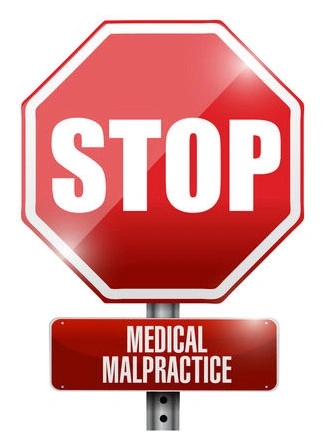
When a doctor, surgeon, nurse, dentist, or other health care professional neglects to meet the legal duty of care by failing to provide a level of service at or above the acceptable standard of practice in the medical industry, it is often the patient who will suffer. If a patient suffers injury or harm as a direct result of a health care professional’s negligence, shouldn’t that victim have the right to seek damages to cover injury-related costs?
Most people would assume this to be the case, as that is how it works in most personal injury cases. However, some states, including Indiana, have imposed caps on the amount of damages a medical malpractice victim can recover. These caps on damages not only harm injured patients and their loved ones by artificially limiting their full and fair monetary recovery, but, according to recent studies, they are harming overall medical care for everyone.
According to the Center for Justice Democracy, a new study has revealed that caps on damages for medical malpractice only lead to:
- An increase in medical errors, as doctors and health care professionals know they will not be held 100 percent liable;
- Higher health care costs for Medicare Part B, as doctors are more willing to perform so-called “risky procedures” when their personal liability is capped; and
- No discernible increase in the number of total patient care physicians.
This raises a question as to why damage caps on medical malpractice should exist. Shouldn’t doctors and other health care professionals be fully responsible for their actions? Shouldn’t they be held accountable in cases in which they have failed to provide the accepted standard of care and their acts of malpractice have led to a serious injury or death?
How Indiana’s Cap on Medical Malpractice Damages Works
Each state imposing med-mal caps has its own laws governing the maximum damages a victim can recover in a medical malpractice lawsuit. Indiana’s Medical Malpractice Act states that the maximum recoverable amount for the injury or death of a patient cannot exceed $1.25 million for any act of malpractice that occurred after June 30, 1999.
While some states simply cap the non-economic damages a victim can seek (e.g., pain and suffering damages), Indiana caps total compensation for economic (e.g., medical bills, lost wages) as well as non-economic damages. The statute goes on to say that qualifying health care providers will not be held liable for damages in excess of $250,000 for any instance of medical malpractice. (Although the Act allows for the cap to be satisfied with a combination of cash and an insurance annuity with a present value of only $187,001.)
In the event a medical malpractice claim against a doctor, nurse or other health care provider exceeds the $250,000 cap on their personal liability, the remainder of the damages (up to the maximum allowable amount of an additional $1,000,000)) is paid by the Indiana Patient Compensation Fund.
Advantages and Disadvantages of Medical Malpractice Caps
While medical malpractice caps may appear to some to be a bad idea, at least at first glance, others see these caps as having advantages and disadvantages. Doctors and other medical professionals do not have to carry malpractice insurance under Indiana law. However, if they want to qualify for capped liabilities, they need to obtain coverage. The same applies if they wish to work for a hospital or any other health care provider, as most health care-related facilities will require it. This type of insurance can be extremely costly.
Obtaining coverage is beneficial to both an individual physician and the hospital or health care provider he or she works for, as it limits personal liability. Putting caps on damages, particularly non-economic damages, allegedly saves hospitals millions of dollars each year. It can also significantly lower liability insurance premiums. Without a cap on damages, some people believe doctors would either be unable to afford coverage, resorting back to using “defensive medicine” rather than pursuing the optimal course of treatment, or failing to report medical errors altogether for fear of the financial and legal ramifications.
The downside to capping damages is that it does not take into account the unique circumstances and facts involved in each individual case. A cap on damages does nothing to resolve the issue of being able to assign a fair monetary value to non-economic damages a patient may suffer.
For example, if a parent loses a child because of an act of malpractice there are no true economic damages. So when there is a cap on noneconomic damages the life of that child is worth less than the loss of a young man or woman who is working full time and is married or has minor children.
In that case, the lost economic damages would be substantial and include the loss of income for the life time of the patient who died. And a cap on total damages, including economic damages, means that those patients with the most serious injuries, such as patients with brain injuries or paralysis from an act of malpractice, will not be fully compensated, even with a cap of $1,250,000.
HEADING
Our attorney at the Law Office of Kelley J. Johnson has worked with the Indiana Medical Malpractice Act and the caps on damages for nearly 20 years. We understand how the system works and try to educate our clients from the outset. At the Law Office of Kelley J. Johnson, we try to evaluate your case early and give you our recommendations as to whether you have a claim that should be investigated and pursued.
We have also filed many claims for damages on behalf of an injured patient with the Indiana Department Insurance for damages over and above what the healthcare provider has paid. If you have questions about the caps in Indiana, the attorney at the Law Office of Kelley J. Johnson will try to answer those questions.
Sources:
- Center for Justice Democracy: Fact Sheet: New Studies Show: “Caps” On Damages Ruin Health Care
- gov: Indiana Code, Title 34, Article 18, Chapter 14, Limits on Damages
- Indiana State Medical Association: Key Features of Indiana’s Medical Malpractice Act










